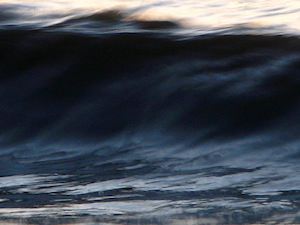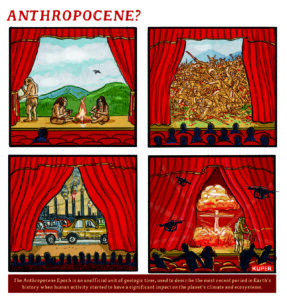Rising CO2 ‘Could Devastate Seas’
Scientists say the world’s marine species are liable to face 100,000 years of change unless greenhouse gas emissions are radically reduced.
By Tim Radford, Climate News NetworkThis piece first appeared at Climate News Network.
LONDON — Think of the Eocene geological epoch, more than 50 million years ago. Carbon dioxide concentrations exceeded 800 parts per million. Tropical oceans were at 35°C, nearing body temperature; polar oceans were 12°C, which is the temperature of the waters off San Francisco.
There was no Arctic ice. The coral reefs had all but perished. There were no reef fish and the seabed was paved with the remains of foraminifera, a tiny shellfish.
The ocean food web was dominated by minute picoplankton rather than the more substantial diatoms that are the basis of life today: these were creatures just too small to nourish the fish that would then become prey for today’s sharks, tuna, whales, seals and even seabirds.
The message is that cold is good for big creatures. The trade winds around 50 million years ago were feeble, the oceans were poorly ventilated, with huge zones in which oxygen was sparse or non-existent, and sea levels were high.
Then 56 million years ago came a crisis called the Paleocene-Eocene Thermal Maximum: it lasted 200,000 years and temperatures – already high – soared by at least 5° and perhaps 9°C. Ecosystems were disrupted, but extinctions were few: the sea’s animals managed by moving north or south.
Richard Norris of Scripps Institution of Oceanography at the University of California San Diego and colleagues want to use the Eocene 50 million years ago as a model for future possibilities. They point out in the journal Science that carbon dioxide levels passed the 400 parts per million mark in May 2013 and that if the world carries on burning fossil fuels at the present rate, then the conditions of the greenhouse world of 50 million years ago could be here in just 80 years.
And their message is: what happened once before could happen again. The seabed could become a disposal ground for featureless rubble, the acidification of the oceans could eliminate the coral reefs and leave the continental shelves smeared instead with red clay, and the food web on land and sea could start to alter. The lesson of the Paleocene-Eocene Thermal Maximum is that major ecological changes could endure a very long time.
A mere millennium of change?
Paradoxically, the approaching greenhouse world will not be because of an arbitrary change in planetary conditions, as it was last time; it will be a consequence of advanced industrial human society.
The scale of this consequence, however, will be quite disproportionate. Small bands of humans roamed the planet as scavengers and hunter-gatherers for 250,000 years in an “icehouse” world. They invented agriculture only 10,000 years ago, and started using fossil fuels in systematic ways only 200 years ago: the past 200 years, however, seem set to make a world of difference to the blue planet.
If greenhouse emissions are dramatically curtailed, then the oceans will still change, but the period of change may last only a thousand years or so, say the authors. If emissions continue to increase, then the consequences could be very long-lasting.
“Although the future ocean will begin to resemble the past greenhouse world, it will retain elements of the present “icehouse” world long into the future”, Norris and colleagues warn.
“Changing temperatures and ocean acidification, together with rising sea level and shifts in ocean productivity, will keep marine ecosystems in a state of continuous change for 100,000 years.”
Your support matters…Independent journalism is under threat and overshadowed by heavily funded mainstream media.
You can help level the playing field. Become a member.
Your tax-deductible contribution keeps us digging beneath the headlines to give you thought-provoking, investigative reporting and analysis that unearths what's really happening- without compromise.
Give today to support our courageous, independent journalists.






You need to be a supporter to comment.
There are currently no responses to this article.
Be the first to respond.